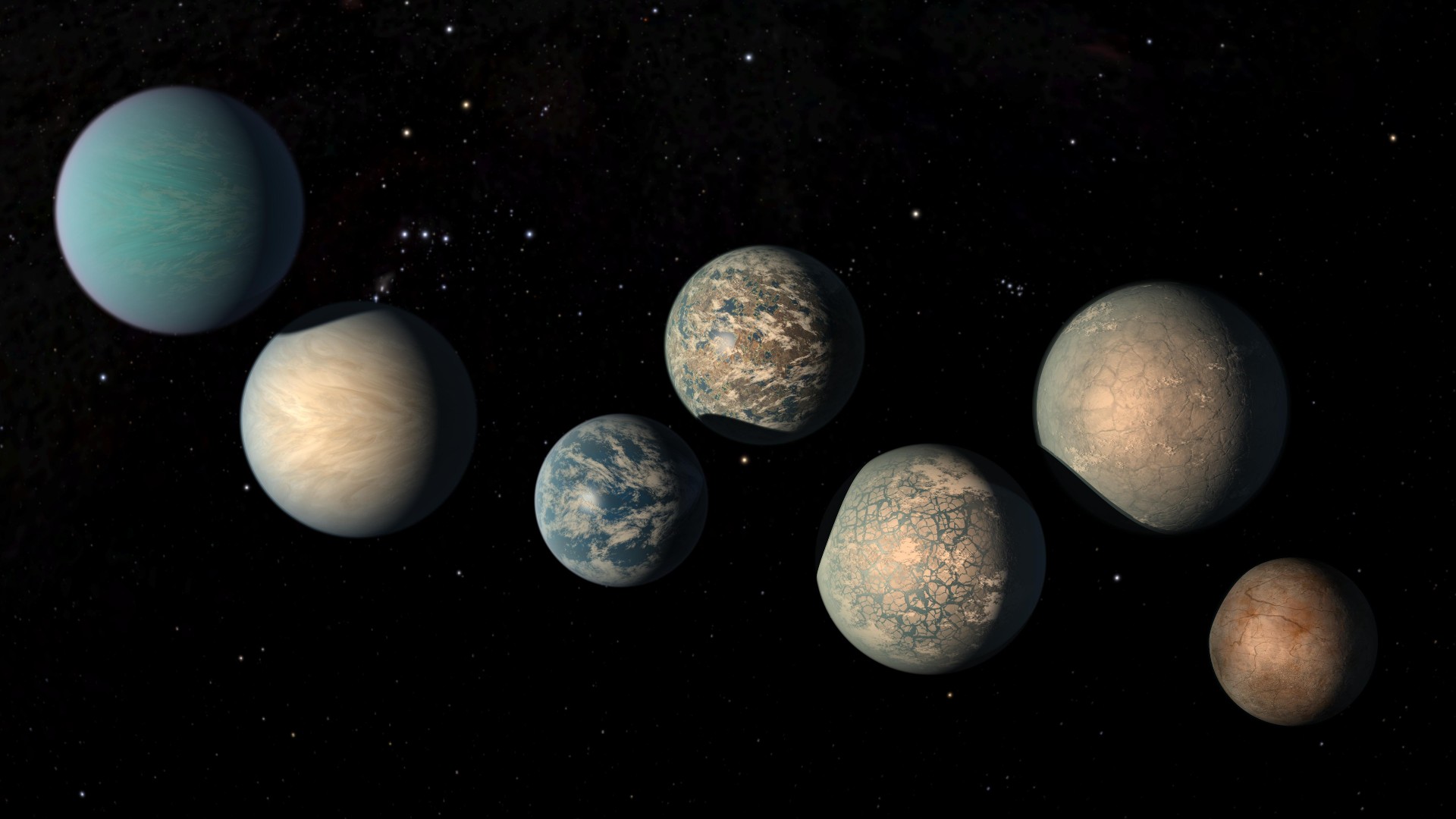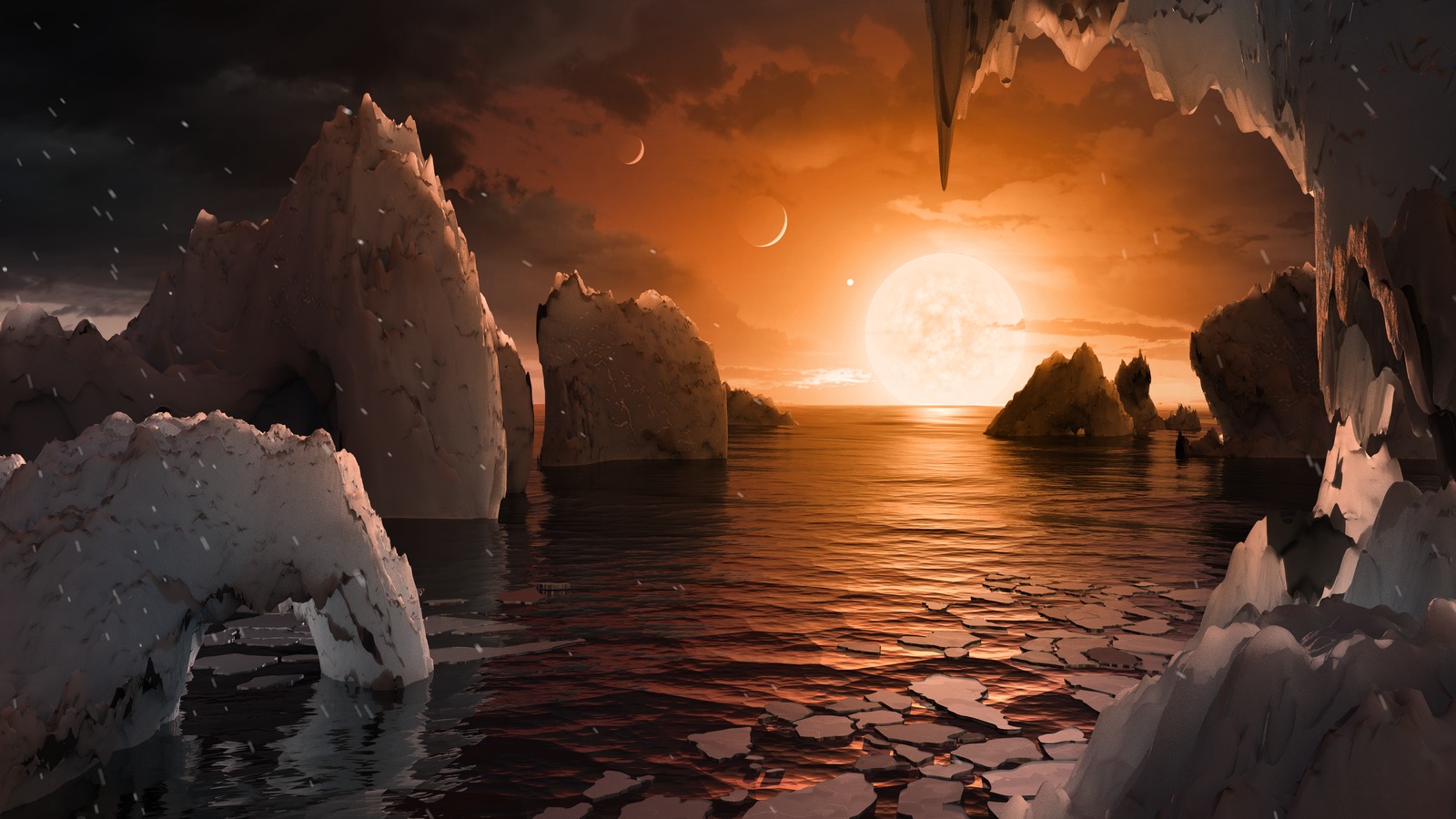Humans could become a truly interplanetary species within 200 years, physicists claim
Figure out how to harness renewable energy to explore the stars or risk humanity's destruction, stark new paper warns

Our species faces a pivotal moment in human history. Either we develop the technology to safely harness the energy needed to escape our planet, or we kill ourselves in some great cataclysm, a stark new study claims.
But, the new paper argues, if we can achieve the former and avoid the latter, then we might just become a truly interplanetary species in as little as 200 years.
"The Earth is a tiny dot surrounded by darkness," study lead author Jonathan Jiang, of NASA's Jet Propulsion Laboratory, told Live Science. "Our current understanding of physics tells us that we are trapped on this tiny rock with limited resources."
To leave our planet for good, humans need to drastically ramp up the use of nuclear and renewable energy, and simultaneously safeguard those energy sources from being used for malicious purposes.
And the next few decades will prove critical: If humanity can safely transition away from fossil fuels, it might just have a shot, the study suggests.
The Kardashev scale

In 1964, the soviet astronomer Nikolai Kardashev proposed a measurement scheme, later modified by Carl Sagan, to estimate the technological capability of an intelligent species. It all comes down to energy, and how much of it (from whatever source) a species can utilize for its own purposes, whether those are exploring the universe or playing video games.
Related: 9 Strange, scientific excuses for why scientists haven't found aliens yet
Get the world’s most fascinating discoveries delivered straight to your inbox.
A Kardashev Type I civilization, for example, can use all the energy available on the species’ home planet, including all the sources of energy in the ground (such as fossil fuels and materials that can be used for nuclear fission) and all the energy falling onto that planet from its parent star. For Earth, this is somewhere around 10^16 watts.
Type II civilizations consume 10 times the amount of energy, and are able to exploit the entire energy output of a single star. Type III species can go even further and use most of the energy in an entire galaxy.
Needless to say, the human species is well below the Type I threshold, but our energy consumption grows with every passing year. More people are using more power per capita, but that power comes at a cost: namely, the threat to our biosphere from the release of carbon and pollutants, and the risk posed by the ability to use powerful means of energy storage and delivery for destructive purposes, such as nuclear bombs.
The great filter

The danger posed by the increased consumption of energy may explain why scientists have found no evidence of advanced alien civilizations. If Earth isn't very special and the development of life and intelligence isn't all that unique (and there's no reason to assume that it is), then the galaxy should be teeming with intelligent critters. Sure, we haven't been around for very long, astronomically speaking, but the Milky Way is billions of years old. Surely by now somebody, somewhere should have reached the Type III stage and begun exploring the galaxy in earnest.
This means that by the time humans became intelligent, there should have been someone there to meet us, or at least leave behind a welcome gift.
But as far as we can tell, we're alone. Life, and especially intelligent life, appears to be exceedingly rare. So perhaps some set of processes removes intelligent life from the scene before a civilization can reach higher stages of development. Most of these so-called "great filters" are different forms of species self-destruction.
Indeed, we're already capable of self-destruction as a species, and we haven't even cracked the first rung of the Kardashev scale. A handful of countries now have the nuclear-armed capacity to wipe out every single human on the planet.
"We are our own Great Filter," Jiang said.
The trick is to avoid self-destruction while we ramp up our energy use to the point where we can reliably exist on multiple worlds at once, even if it's just in the solar system, Jiang said. Having a human presence on more than one planet serves as a strong bulwark against self-destruction. But to achieve multi-planetary status requires an enormous amount of energy, not just for establishing short-term colonies, but for maintaining full-fledged, self-sustaining cities.
The knife's edge
Jiang and his team explored the best way to reach Type I status in a paper uploaded in April to the journal preprint server arXiv. The researchers followed the recommendations of the United Nations Framework Convention on Climate Change, which charted clear consequences for the continued unabated use of fossil fuels. In short, unless humanity rapidly switches energy supplies to nuclear and renewable options, we will do too much damage to our biosphere to continue climbing the Kardashev scale.
The study also assumed an annual 2.5% growth in the use of renewable and nuclear energy, and found that in the next 20 to 30 years, those forms of energy use will steadily displace fossil fuels. Nuclear and renewable energy sources have the potential capability to keep on growing in output without putting further strain on the biosphere, and if we continue at our current rate of consumption we will reach Type I status in the year 2371, the team found.
Jiang acknowledges that the calculations included a lot of assumptions, and that the uncertainty on the estimate was probably around 100 years. The calculations had to assume that we would identify safe ways to handle nuclear waste, and that the increased ability to harness energy wouldn't lead to disaster. Still, if we can maintain this course, we can set the stage to potentially protect our species for generations to come within the next few hundred years.
Originally published on Live Science.

Paul M. Sutter is a research professor in astrophysics at SUNY Stony Brook University and the Flatiron Institute in New York City. He regularly appears on TV and podcasts, including "Ask a Spaceman." He is the author of two books, "Your Place in the Universe" and "How to Die in Space," and is a regular contributor to Space.com, Live Science, and more. Paul received his PhD in Physics from the University of Illinois at Urbana-Champaign in 2011, and spent three years at the Paris Institute of Astrophysics, followed by a research fellowship in Trieste, Italy.


